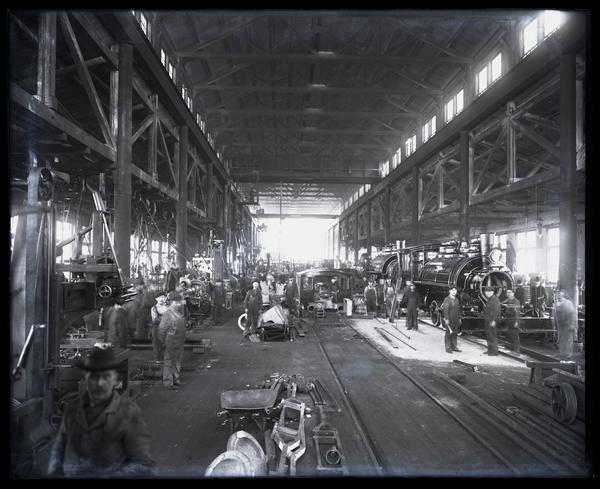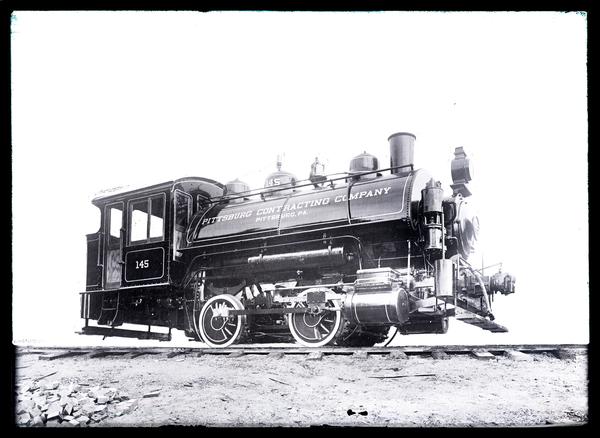As an archivist, working with negatives poses more challenges than working with photographic prints. For one, the negative needs to be backlit in order to see the image. The shades are reversed (black is white and vice versa), so you need to play a little mind trick with your eyes to make out the details of the image. Even when in good condition, negatives can be fragile and difficult to handle. This is especially true when the negatives are made of glass which are not only fragile but heavy!
Vulcan Iron Works was a producer of mine and industrial locomotives from 1849 through the 1950s. The company’s photographic records date from the 1880s to 1943. Vulcan switched from using glass plate negatives to cellulose film negatives around 1920. There are over 7,600 glass plate negatives, 1,400 film based negatives, and 2,400 photographic prints in their collection at Hagley. The images were numbered by the company as they were developed.

The Hagley archivists who first worked on this collection in the 1960s and 1970s created a card index as a guide to the collection. Each card had a negative number and very brief description of the image, some also included the date. The card index was arranged by subject and then by negative number within each subject.
Unfortunately, not every negative had an index card, and there were index cards for negatives we did not have. The most challenging aspect of matching the index card information to the negatives was the series of images of locomotive engines produced by the company. These negatives of locomotives were indexed by purchaser name and included detailed specifications related to the engine.
In the Manuscripts and Archives collection of Vulcan Iron Works records at Hagley, there is a microfilm copy of a purchaser log book that lists the construction number, purchaser, and detailed specifications of that locomotive. Generally, when researchers contact us, it is the construction number that is being referenced in order to request an image.
This project felt like a giant puzzle. A puzzle that was difficult to view, very fragile, and made of glass. Luckily, I really enjoy puzzles. It was fun to look at an image and try to match it to the purchaser logbook information. Sometimes I was lucky, and the image of the train engine contained enough details for me to positively identify it. Other times I was not so lucky.

It would have been ideal to list the construction number and train engine specifications for every image of a locomotive in the collection but it just was not possible with the information that survived. However, I am proud to say that more than 80 percent of the train engines are identified with the information from the purchaser log book. Railroad scholars are a dedicated and enthusiastic group, and I hope they will find great value in this significant collection from Vulcan Iron Works.
To view a small selection of images from the collection, check out the Vulcan collection in the Hagley Digital Archives
Use the following link to view the finding aid that includes a comprehensive listing of the collection’s content: https://findingaids.hagley.org/xtf/view?docId=ead/1971_210.xml
Laurie Sather is the Audiovisual Archivist at Hagley Museum and Library.
